
Starting June 1st, 2023 Our warehouse fee will be $0.65/cubic foot per month
In effort to lower the warehouse storage fee during inflation, we have went narrow aisle racking.This construction took us four months but the project is finally completed. With narrow aisle racking, we are able to drop storage by 24%.We as partners will go through this inflation together.
03/14/2024
Palletizing shipment goods is a crucial step in ensuring the safe and secure transportation of products from one location to another. In this article, we delve into the world of palletized shipping, exploring its significance and key differences from non-palletized shipping. Worldcraft Logistics, a leader in the industry, shares valuable insights and best practices to guarantee the safety and security of your goods during transit.
Palletizing a shipment is the act of packing goods onto pallets in preparation for transport. In traditional order fulfillment, a 3PL picks one or more items, boxes up the order, and ships it to the customer. For palletized shipping, multiple products or cases of merchandise are loaded onto pallets and secured for bulk shipping. Pallets are often wrapped with plastic film to hold the items in place.
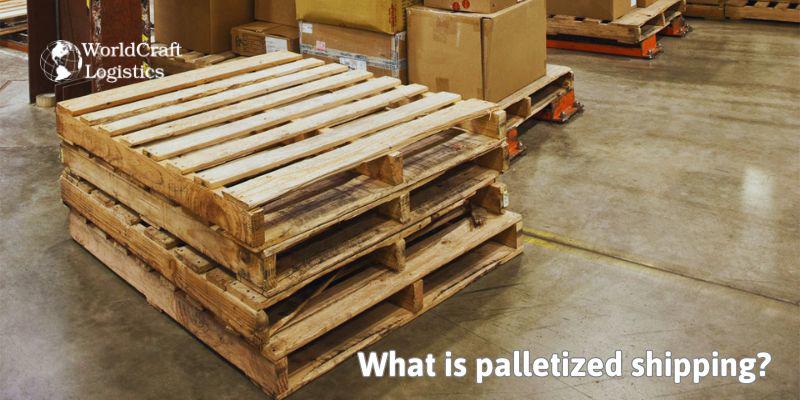
Real example:
Let's examine an example of a palletized shipment related to an electronics manufacturing company tasked with transporting a batch of refrigerators to retailers nationwide. The company in question is WCL Electronics.
WCL Electronics opts for robust, industry-standard wooden pallets for the shipment. The refrigerators are carefully loaded onto the pallet, ensuring an even distribution of weight to avoid any instability during transportation. Each refrigerator is labeled with a barcode and detailed destination information. The pallet itself is labeled for shipping, indicating the total weight, destination, and any specific handling instructions. Proper documentation, including a packing list, is prepared for the shipment.
Given the sensitivity of electronic devices, the transportation route is selected to avoid harsh weather conditions. The refrigerators are shielded from moisture and temperature fluctuations.
Upon reaching each retailer's location, the pallet is safely unloaded using suitable equipment. The refrigerators are then distributed within the store.
This meticulous process ensures the secure and efficient transportation of WCL Electronics' refrigerators, showcasing the importance of palletized shipping for delicate electronic equipment.
If you are interested in common terms in the logistics industry, the articles below are definitely for you:
👉 What is domestic shipping? Benefits, pricing and efficient planning
👉 What is Ecommerce Shipping? Guide to GOOD, CHEAPEST solutions and partners
Worldcraft Logistics experts emphasize two scenarios where palletized shipping proves to be the optimal choice for our clients: oversized consumer deliveries and B2B shipments.
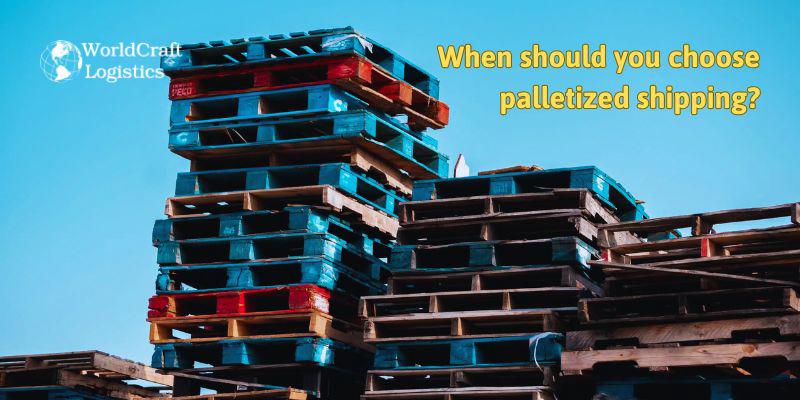
In the current era of online shopping, consumers have the flexibility to order a wide array of items, ranging from bicycles and furniture to even cars. However, larger products may exceed the size limits of standard shipping services like FedEx, UPS, or USPS. In such instances, LTL (Less Than Truckload) freight emerges as a viable solution, providing a direct delivery route to customers' doorsteps. To illustrate, consider a case from Red Stag Fulfillment, where a client in the D2C eCommerce sector sells substantial and weighty equipment. Each machine is received at our warehouse on a pallet, and when an order is placed, the product is shipped alongside the pallet via FedEx Freight.
It's essential to acknowledge the added logistics involved in freight deliveries to residential addresses. Firstly, navigating through neighborhood streets can pose challenges for large trucks.
Additionally, given the absence of loading docks at most homes, it becomes imperative to dispatch a truck equipped with a lift gate to safely lower the palletized shipment from the trailer to the ground.
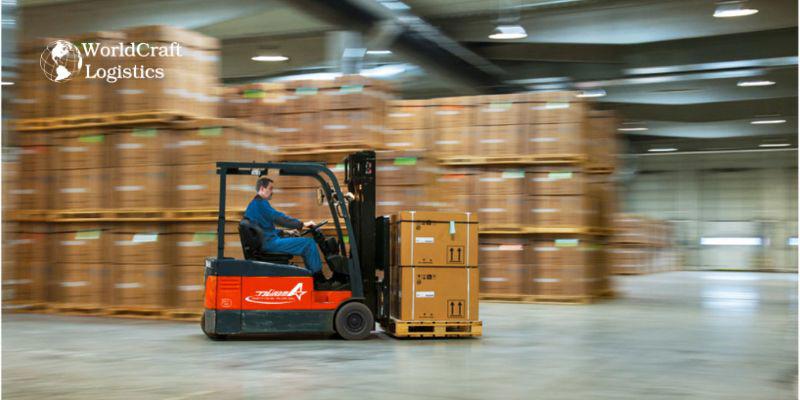
Palletized freight find frequent application in the realm of wholesale or bulk scenarios. When an eCommerce business needs to fulfill an order for a retail store or another company, the most efficient and cost-effective delivery option often lies in utilizing LTL freight. This approach streamlines the transportation process, ensuring that bulk shipments reach their destination in a manner that is both efficient and economical.
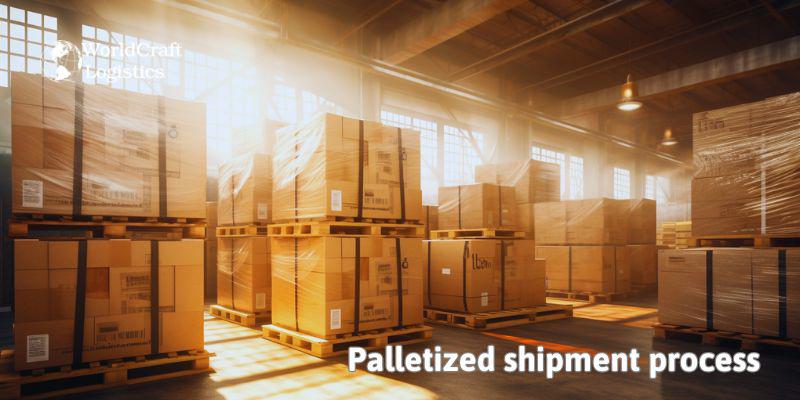
The palletized shipment process involves the careful packing, handling, and transportation of goods using pallets. Here's an overview of the 9 steps in a palletized shipment process:
The process begins with receiving and processing customer orders. The items to be shipped are identified, and relevant information such as quantity, dimensions, and weight is recorded.
Products are then prepared for shipment by being securely packed onto pallets. This involves arranging the items in a stable and space-efficient manner on the pallet. Cartons or boxes may be strapped or shrink-wrapped to the pallet to prevent movement during transit.
Each pallet is labeled with necessary information, including shipping addresses, tracking numbers, and any other relevant details. Clear and accurate labeling is crucial for efficient sorting and delivery.
Necessary shipping documentation, such as invoices, packing lists, and customs paperwork (if applicable for international shipments), is prepared and attached to the pallet. Compliance with shipping regulations and accurate documentation is essential.
The loaded pallets are then transported to the shipping facility, whether it's a distribution center, warehouse, or a transportation hub. Depending on the destination and shipping method, the pallets may be loaded onto trucks, containers, or other modes of transportation.
The palletized shipment is transported to its destination. Throughout the journey, the shipment is tracked using tracking numbers or other identification methods. This allows both the shipper and the recipient to monitor the progress of the shipment in real-time.
Upon reaching the destination, the palletized shipment is unloaded from the transportation vehicle. If the shipment involves multiple stops, it may go through a sorting facility. For residential deliveries, additional considerations like lift gates or specialized equipment may be needed for unloading.
The palletized goods are then distributed to their final destinations, whether it's a retail store, warehouse, or directly to the end customer. In cases where the shipment is part of inventory, the goods may be stored until needed.
The recipient or the retailer receiving the palletized shipping verifies the contents against the packing list and checks for any damages during transit. The goods are then unpacked and processed into inventory or made available for sale.
Throughout the entire palletized shipment process, attention to detail, proper documentation, and efficient handling are crucial to ensure that goods reach their destination in a timely and intact manner.
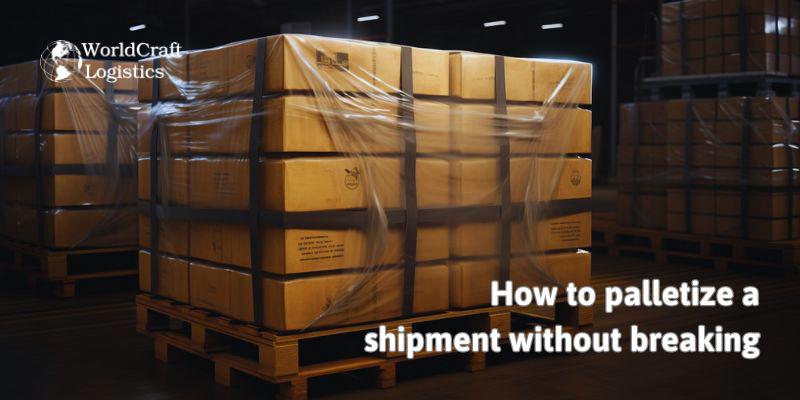
There are 4 important things you need to understand before shipping orders by pallet to avoid damage to products or goods.
Understand and document stock details, emphasizing dimensions and weight. Prioritize loading heaviest cargo at the bottom for stability and safety.
Ensure tight product binding for load stability during transport. Optimal spacing increases items per pallet, reducing shipping costs and maximizing storage efficiency.
Thoroughly inspect each pallet to identify and fix loose objects or structural issues. Prevent hazards during transit and optimize space utilization.
Use stretch wrap to tightly secure products on pallets. Manual or machine application enhances structural integrity, preventing damage or loss during transit and saving time in high-volume orders.
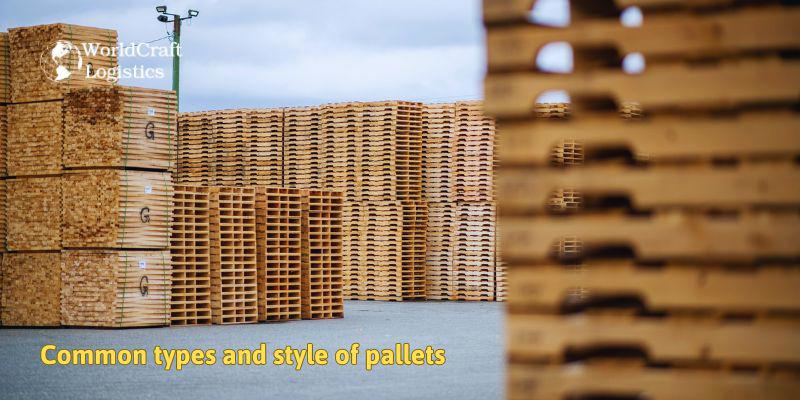
Loads are categorized into three types, and it is crucial to understand the safe storage methods for each. Some wrapping machines or photo eyes may not be suitable for certain load types, underscoring the importance of checking load compatibility before initiating the palletizing process.
Type A Load: This category refers to a pallet where the contents are flush with each other, creating a perfect cube.
Type B Load: In a Type B Load, various-sized items on the pallet come together to form a cube, even though the edges may not be perfectly flush.
Type C Load: Similar to a Type B Load, a Type C Load consists of packages with diverse shapes and sizes. However, in this case, the items are unevenly stacked on the pallet.
Pallets are available in diverse styles, each designed to support various load configurations, weights, and methods of pallet transportation. Here are some common pallet styles:
GMA Pallets: GMA, or Grocery Manufacturers Association, recommends a standard pallet size of 48”x40” to streamline the distribution process. GMA pallets are capable of holding up to 4600 lbs.
Two-Way Entry Pallets: These pallets are reversible, providing forklift access from two sides instead of one. This design facilitates easier arrangement of pallets in storage or transportation.
Winged Pallets: Winged pallets feature a deck board that extends beyond the stringers, allowing for the placement of slightly heavier loads. This design enhances the pallet's load-bearing capacity.
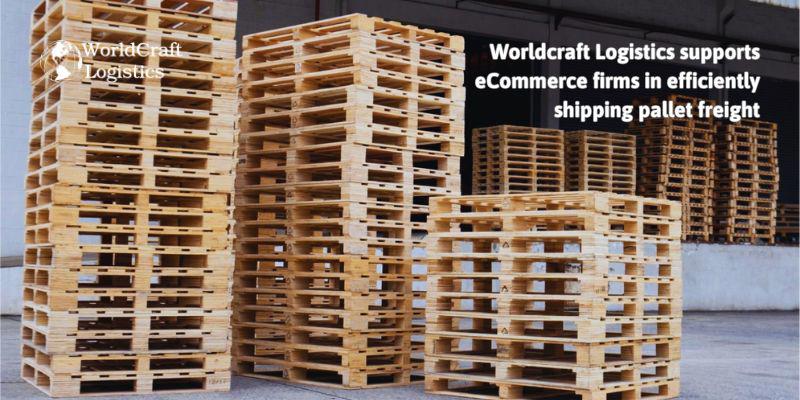
When you rely on Worldcraft Logistics for your palletized shipping needs, we alleviate the burden from your shoulders. In the event of any issues, we handle them directly with the freight carrier, sparing you from the hassle. Here are three ways we simplify the palletized shipping experience for our clients:
Dispute Misclassification Charges: We contest any misclassification charges that may arise, ensuring that you are not unfairly billed for inaccurately categorized shipments.
Prevent Reweighing Charges: We take measures to avoid re weighing charges, optimizing the accuracy of weight calculations during the shipping process to minimize additional costs.
Efficiently Manage the Palletized Shipping Process: We oversee the entire palletized shipping process, ensuring a smooth and efficient experience for our clients. From coordination to problem resolution, we handle the logistics, allowing you to focus on other aspects of your business.
In conclusion, mastering the term of palletized shipment is paramount for transport your cargo. Worldcraft Logistics emphasizes the importance of proper pallet selection, packaging, load distribution, and securing techniques. By adhering to these best practices, businesses can minimize the risk of damage and ensure their products reach their destination intact. As the logistics landscape evolves, staying informed about the latest industry standards and implementing innovative solutions will further enhance the efficiency and reliability of palletized shipping. Thanks for reading.
SEO
Digital Marketing/SEO Specialist
Simon Mang is an SEO and Digital Marketing expert at Wordcraft Logistics. With many years of experience in the field of digital marketing, he has shaped and built strategies to effectively promote Wordcraft Logistics' online presence. With a deep understanding of the logistics industry, I have shared more than 500 specialized articles on many different topics.

Education
01/05/2025

Education
02/18/2025

Education
01/01/2024

Education
08/28/2024

Education
11/13/2023